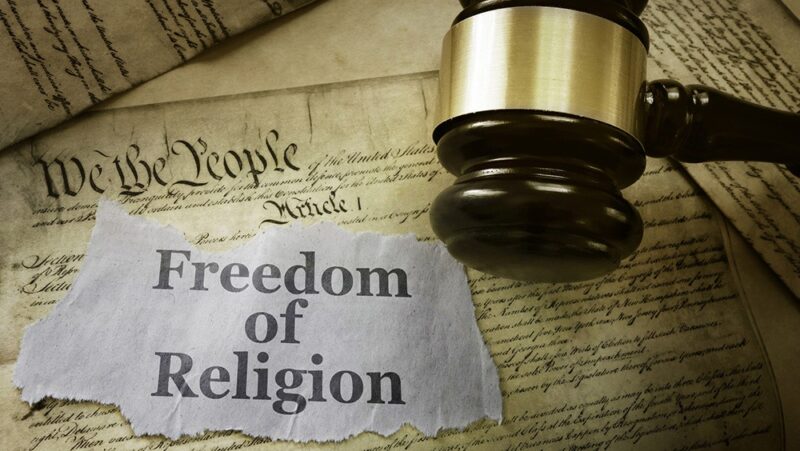16 Protest Movies That Demonstrate the Power of the First Amendment
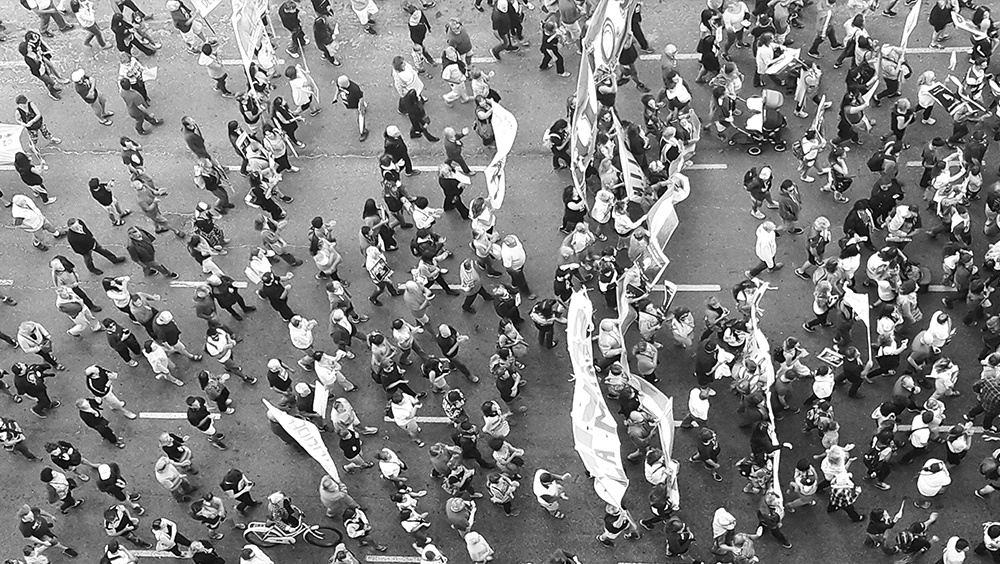
Throughout U.S. history, people have exercised their First Amendment freedoms to protest policies and raise awareness of issues they care about.
Some of these events inspired filmmakers to capture the story in documentaries or feature films. These films explore real-life protests that represent a variety of time periods, types of activists, causes and viewpoints.
Check out these movies about historic examples of First Amendment freedoms in action through protest.
Discover 16 protest movies that showcase the power of the First Amendment
"99%: The Occupy Wall Street Collaborative Movie" (2013)
The Occupy Wall Street movement protesting economic inequality began in September 2011 in New York City. Its slogan during marches and sit-ins was “We are the 99%,” referencing wealth disparities. A group of nearly 100 collaborators helped create this documentary about the economic protest, mirroring the grassroots structure of the protests themselves. It features supporters, participants and experts with various views on the issues that the movement advocated.
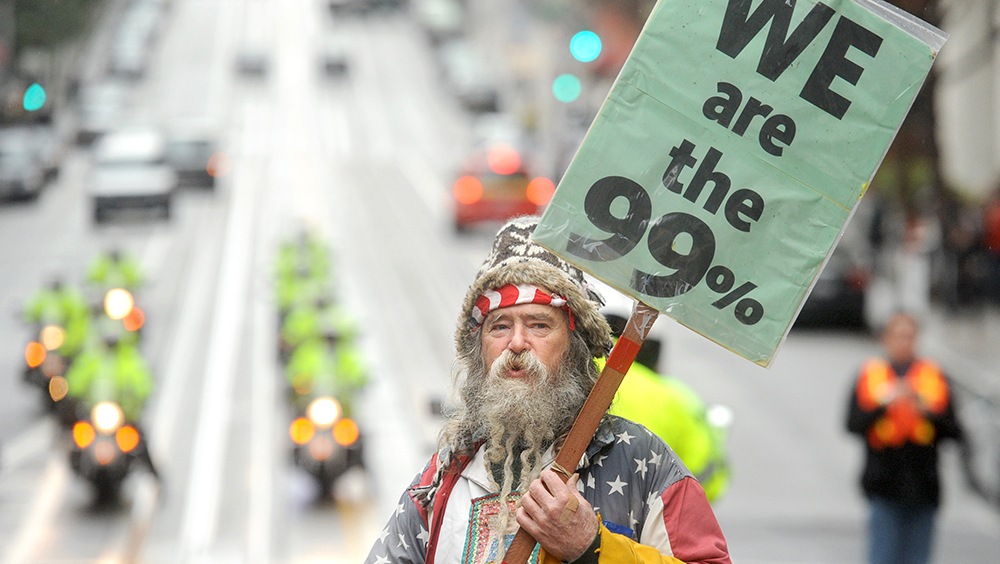
An Occupy protester pickets outside a Bank of America branch in San Francisco in 2012.
"Battleground" (2022)
Filmmaker Cynthia Lowen said she set out to focus her film on people protesting for abortion access. While these activists were included, Lowen decided it was important to showcase other viewpoints. The final film focused on people protesting legalized abortion. It features women from a wide range of religious and political perspectives. The documentary includes advocacy and protests like the March for Life during the lead-up to the U.S. Supreme Court overturning Roe v. Wade, a 2022 decision that was a victory for the anti-abortion movement.
"Chicago 10" (2007)
Using historic footage and animation, this film covers the aftermath of protests and unrest during the 1968 Democratic National Convention in Chicago. City officials limited protests over fears of violence, but many people demonstrated anyway. Some protests became violent, and activists were teargassed and arrested. This film brings to life the transcript of the trial of a group of protestors sometimes called the Chicago 7 (the film also features an additional protestor and the group’s two lawyers) who were charged with crimes — including inciting a riot — yet persisted in speaking out for the freedoms of speech, assembly and petition.
RELATED: 20 of the most famous protests in U.S. history
"Crip Camp" (2020)
The 1970s was a period of protest and social change. A group of young adults who had attended Camp Jened, a summer camp in New York for disabled teens, became part of this protest movement. This film follows former campers who, inspired by their time at the camp and by campers and counselors they met there, protest for disability rights. One camper, Judith Heumann, organized a 1977 sit-in at a San Francisco federal building that led to a breakthrough in legal protections for people with disabilities.
"Disobedience" (2016)
In 2015, as world leaders gathered for the United Nations Climate Change Conference in Paris, activists outside the summit took action to raise awareness about climate issues. This film follows climate protest actions then and historically around the world, including both legal protest and civil disobedience.
"Dolores" (2017)
Dolores Huerta was a Latina workers’ rights advocate during the 1950s. This film explores her life from childhood to motherhood, her years as co-founder of what is now the United Farm Workers, and as organizer of a major farm workers' strike that protested working conditions. It features interviews and insights from Huerta about her ongoing work, which includes voter registration.
"Go-Go City: Displacement and Protest in Washington, D.C." (2021)
In 2019, a D.C. shop playing go-go music outside faced protests by some neighbors about the noise. People who liked the music gathered some 80,000 signatures on a petition to allow the music to be played outside the store. This film documents the Don’t Mute DC movement from its beginnings as a social media hashtag into a protest movement and an organization celebrating the funk style popularized by Black artists in the 1970s. It compares the local protest movement to the broader Black Lives Matter protests happening nationally at the time.
"Harlan County U.S.A." (1976)
A coal mining county in Kentucky, “Bloody Harlan” has been the site of labor disputes since the 1930s, when labor protests led to violence and a 1935 federal law protecting the right to unionize. This Academy Award-winning documentary covers the 1973 “Brookside Strike,” a labor dispute that lasted more than a year with protests — largely lead by women — over poor working conditions and health concerns of mine workers. Filmmaker Barbara Kopple was threatened and escaped injury while documenting the strike. Labor disputes in Harlan County continued as recently as 2019, when laid-off mine workers protested for unpaid back wages after a mining company went bankrupt.
“I think that was the most important film in my life because I learned what life and death was all about. I saw people really standing up for what they believed in.” — Barbara Kopple, filmmaker
"How to Survive a Plague" (2012)
In the late 1980s in New York City’s Greenwich Village, people in communities experiencing a new and deadly illness took action to raise awareness and find answers. Featuring protestors’ archival footage, this documentary covers the founding of the AIDS Coalition to Unleash Power, or ACT UP, and its unique acts of protest and civil disobedience in the early months of the AIDS crisis. It shows how unconventional protests and organizing led to changes in federal policy and to research breakthroughs. Some of the activists featured did not survive AIDS, while others were saved by treatment breakthroughs the group fought for.
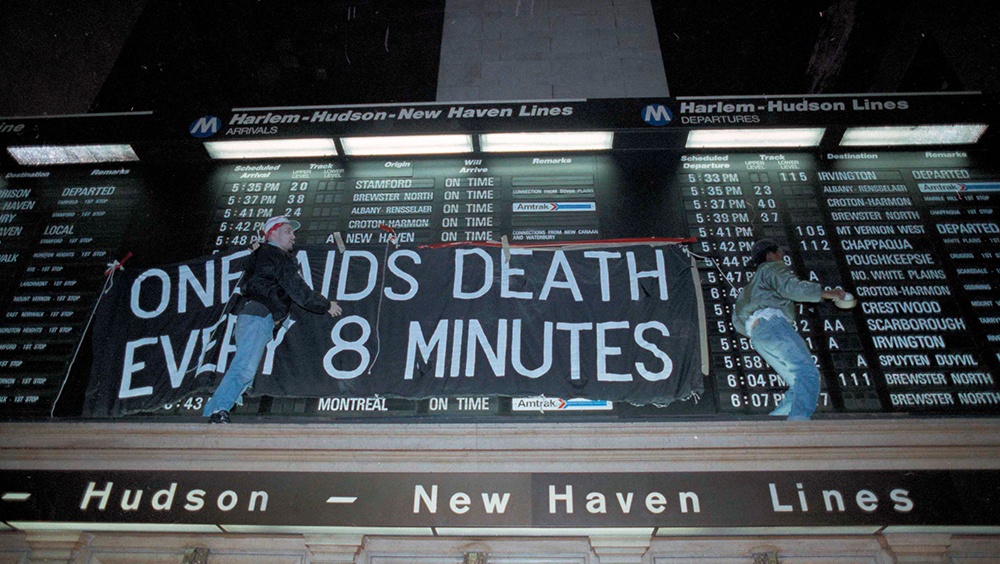
Members of the group ACT UP hang a banner across the train schedule board in New York's Grand Central Terminal in 1991.
"Powerlands" (2022)
In this documentary, Navajo filmmaker Ivey Camille Manybeads Tso explores how people from the Navajo Nation, as well as Indigenous people in Mexico and the Philippines, have protested displacement related to energy production. The film covers how Indigenous peoples have been affected by coal, uranium, oil, wind and solar energy infrastructure and extraction. It shares how activists have protested for protection of sacred lands and the health and safety of Native people.
"Rustin" (2023)
This docudrama about civil rights activist Bayard Rustin, a key planner of the 1963 March on Washington, highlighted not the protest itself but the man behind it. Rustin was openly gay and experienced homophobia while working to end racial discrimination. He spoke only briefly at the march. Colman Domingo, who portrays Rustin in the film, closely studied writings by the activist, who was raised as a Quaker and became an organizer with the Rev. Dr. Martin Luther King Jr. in Alabama.
"She’s Beautiful When She’s Angry" (2014)
Featuring historic clips, interviews and reenactments, this documentary about the women’s rights movement in the 1960s showcases more than 30 women who protested for change. It shows how they petitioned for policy changes on issues like employment, healthcare and childcare. It also features the challenges behind the women’s rights movement, behind-the-scenes organizing like the founding of the National Organization for Women, and links to other civil rights movements. The film inspired protests and demonstrations including a National Women’s March in Peru.
"This Divided State" (2005)
In October 2004, weeks before a critical presidential election, filmmaker Michael Moore was scheduled to speak at Utah Valley State College. Moore had just released the documentary "Fahrenheit 9/11," which criticized then-President George W. Bush's handling of the Iraq War. The appearance, proposed by the student council, generated controversy – and protest – on a divided campus and in the city. This film documents high-profile locals’ protests, lawsuits, threats of pulling the school's funding, a counter-speech given by Fox News personality Sean Hannity on campus, and what people on all sides of the campus protest learned about disagreeing with neighbors.
“The idea is that academic freedom matters, free speech matters. Somebody that doesn’t reflect the majority view should be heard.” — Joseph Vogel, student vice president of academics, about what he learned from the campus controversy.
"The Times of Harvey Milk" (1984)
Before he ran for San Franciso supervisor in 1977, Harvey Milk was an activist. He ran for office in part as a protest for gay rights. This film, funded through grassroots fundraising, uses news and archival footage to chronicle Milk’s career. It explores the protests he faced during his election as the first openly gay city supervisor, his sponsorship of a bill banning discrimination based on sexual orientation that the mayor signed into law, and his assassination. Milk and Mayor George Moscone were killed by the one city supervisor who voted against the equality bill.
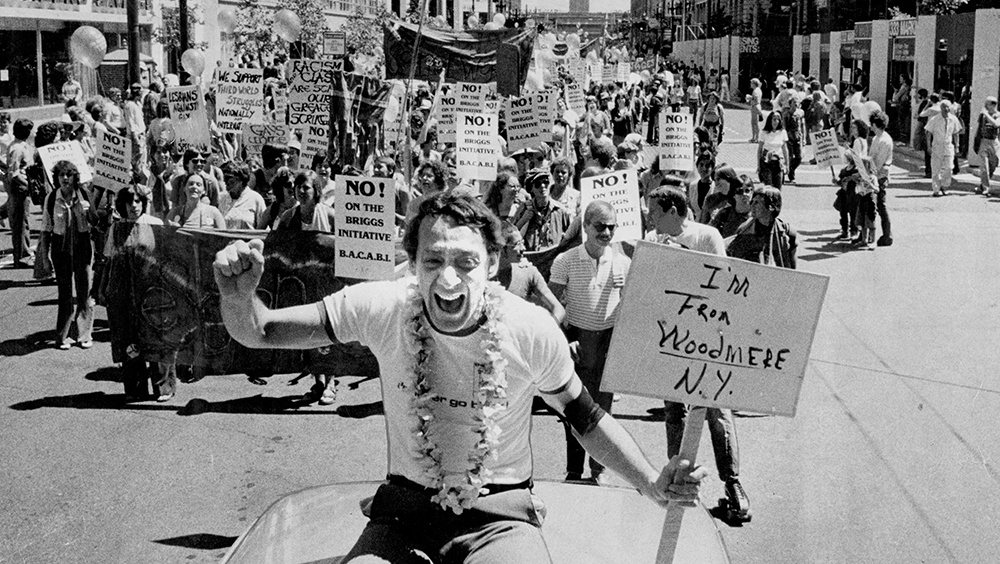
Harvey Milk leads a group of protestors during a San Francisco gay pride parade in 1978. Credit: Terry Schmitt/San Francisco Chronicle via AP
"To the End" (2022)
In a film “about finding hope in dark times,” director Rachel Lears follows four women of color who petition and protest for climate change legislation. For four years, they protest and organize from inside and outside of government, including at a Congressional sit-in and at grassroots protests in front of the White House.
"With Drawn Arms" (2020)
At the 1968 Summer Olympics, 200-meter sprint gold medalist Tommie Smith raised a gloved fist on the medal podium along with bronze medalist John Carlos. Many people may be familiar with the historic image of their protest against racism and segregation. But this film focuses on Smith’s life, his play-by-play accounting of the races that brought him to the podium, and the aftermath of the protest. It highlights its consequences for his career, features an interview with a reporter who was critical of his protest, and compares his protest to other acts of protests by prominent sports figures.
This report is compiled with the input of Freedom Forum experts. The editor is Karen Hansen. Email.
13 Freedom of Religion Quotes You Should Know
Funny or Not, Speech is Still Free
Related Content
The more you know, the freer you are.
Learn about the First Amendment.
